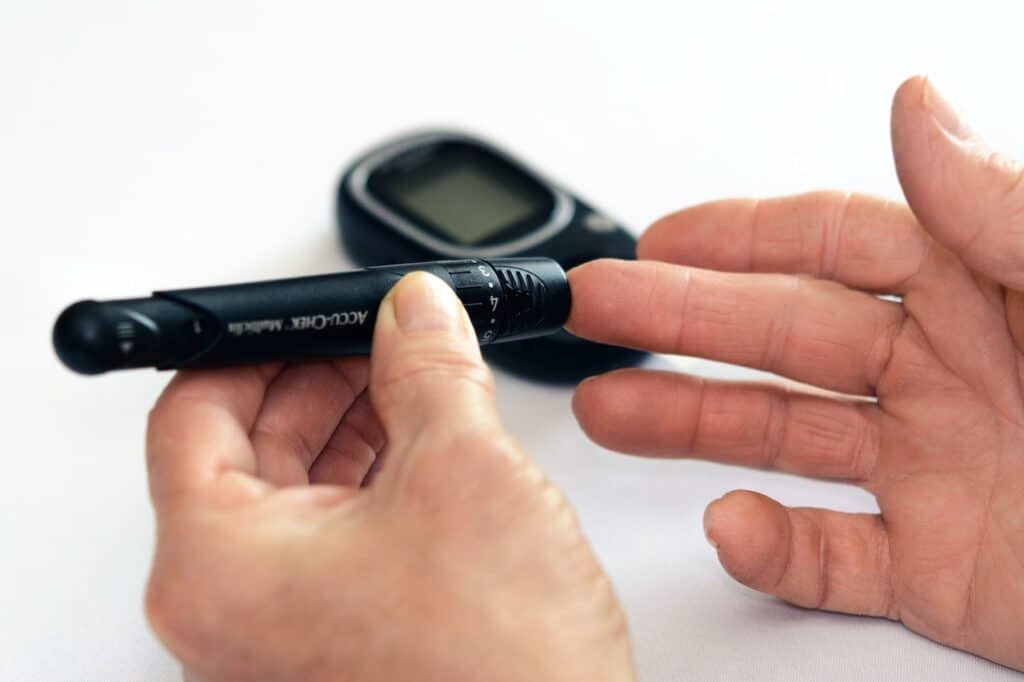In the wake of the COVID-19 pandemic, telemedicine emerged as a revolutionary tool in healthcare, allowing for the remote delivery of medical services.
Its impact on various medical specialties has been significant, and one area that has particularly benefited is the management of diabetes.
Telemedicine has provided a lifeline for individuals with diabetes, enabling them to maintain regular contact with healthcare professionals and receive the necessary support and guidance, even in times of restricted physical access to clinics and hospitals.
The Rise of Telemedicine in Diabetes Care
Before the pandemic, telemedicine was not so widely used in the day-to-day management of diabetes.
However, the COVID-19 crisis forced a rapid shift in healthcare delivery, leading to the widespread adoption of telemedicine as an essential tool for diabetes management.
According to the World Health Organization (WHO), telemedicine refers to the use of information and communication technologies (ICT) for the exchange of valid information between healthcare professionals and patients, aiming to diagnose, treat, and prevent disease and injuries.
Telemedicine in diabetes care has proven to be highly effective in maintaining patient-physician communication, education, and monitoring of treatment goals.
It has been particularly instrumental in overcoming the challenges posed by the pandemic, such as restricted access to healthcare facilities and the need for physical distancing.
By leveraging telemedicine, healthcare professionals have been able to remotely assess patients’ metabolic control, offer personalized treatment recommendations, and provide emotional support.
Advantages of Telemedicine in Diabetes Management
Improved Patient Motivation and Therapy Adherence
Increased patient contact through telemedicine, including frequent telephone calls, has shown to enhance patient motivation, therapy adherence, and metabolic control.
By scheduling regular phone calls as an adjunct to in-person clinic visits, healthcare professionals can evaluate treatment effectiveness, provide recommendations for insulin therapy, dietary advice, and physical activity, and assess patients’ adherence to these measures during subsequent telephone visits.
This frequent communication helps patients stay motivated, track their progress, and receive timely guidance and support.
Flexible and Easy Access to Care
One of the key advantages of telemedicine is its flexibility and ease of access.
With the widespread availability of mobile phones, patients can easily engage in telephonic consultations, allowing healthcare professionals to monitor treatment goals and make necessary adjustments.
Additionally, video consultations have proven valuable in establishing a personal connection between patients and healthcare professionals, building trust, and better assessing patients’ mood and motivation.
Video calls also enable proper inspection of glucose data recorded in conventional paper diaries, facilitating accurate evaluation and treatment planning.
Virtual Training and Education
Telemedicine has opened up new avenues for remote training sessions, enabling patients to receive specific diabetes-related education and guidance via video calls.
These sessions can cover various aspects of diabetes management, including the use of technical devices, dietary advice, and behavioral recommendations.
Virtual training provides patients with the necessary knowledge and skills to manage their condition effectively, empowering them to take control of their health.
It also allows healthcare professionals to address any concerns or questions patients may have, ensuring they receive the information and support they need.
Advanced Technologies Enhancing Telemedicine
The integration of advanced technologies into telemedicine has further improved its effectiveness in diabetes management.
Mobile applications designed for diabetes management offer a convenient and comprehensive solution for tracking insulin administration, carbohydrate counting, and providing automated feedback on glucose patterns.
These applications have demonstrated positive outcomes, such as improved glycemic control, reduced frequency of hypoglycemic events, and enhanced quality of life in both type 1 and type 2 diabetes patients. [1]
Continuous glucose monitoring (CGM) systems have also played a key role in telemedicine.
These systems provide real-time glucose values obtained from sensors, reducing the need for frequent capillary glucose measurements.
CGM reports, including data on time spent in target ranges, glucose management indicators, and sensor utilization, can be easily shared with healthcare professionals, allowing for remote evaluation of glycemic control and treatment adjustments.
CGM systems have significantly improved glycemic control, treatment adherence, and quality of life for individuals with diabetes.
Smart pens, specifically developed for pediatric care and patients with therapy adherence issues, automatically record insulin application data and transmit it to mobile apps. [2]
These devices offer a more reliable and transparent picture of insulin dosing behavior, facilitating therapy management and supporting diabetes telecare.
Decision support systems for insulin therapy, incorporating algorithms for basal and basal-plus insulin dosing, have shown promise in home care settings, providing standardized recommendations and improving glycemic control.
The Future of Telemedicine in Diabetes Care
The COVID-19 pandemic showcased the immense potential of telemedicine in diabetes management.
Its advantages, including improved patient motivation, flexible access to care, virtual training and education, and integration of advanced technologies, have transformed the way healthcare professionals and patients approach diabetes care.
As the world looks at the years ahead, it is crucial to explore the future of telemedicine in diabetes management and harness its full potential.
Enhanced Remote Monitoring and Support
Future advancements in telemedicine will focus on enhancing remote monitoring capabilities.
With the integration of wearable devices and sensors, healthcare professionals will have access to real-time data on various physiological parameters, enabling them to track patients’ health status more comprehensively.
This continuous monitoring will enable early detection of deviations from treatment goals and prompt intervention, preventing complications and improving overall outcomes.
Artificial Intelligence and Data Analytics
The integration of artificial intelligence and data analytics into telemedicine platforms will revolutionize diabetes management.
Advanced algorithms can analyze vast amounts of patient data, including glucose levels, insulin doses, dietary habits, and physical activity, to provide personalized treatment recommendations.
These intelligent systems will learn from individual patient data, identify patterns, and make precise predictions, optimizing therapy management and improving patient outcomes.
Collaborative Care and Multidisciplinary Approach
Telemedicine will facilitate collaborative care and a multidisciplinary approach to diabetes management.
Healthcare professionals from various specialties, including endocrinologists, dieticians, psychologists, and diabetes educators, can collaborate seamlessly through telemedicine platforms.
This integrated approach will ensure a holistic and comprehensive management of diabetes, addressing not only glycemic control but also the psychological, dietary, and lifestyle aspects of the disease.
Patient Empowerment and Self-Management
Telemedicine will empower patients to take an active role in their diabetes management.
With easy access to educational resources, remote monitoring tools, and personalized treatment recommendations, individuals with diabetes will have the knowledge and tools to self-manage their condition effectively.
Telemedicine will enable patients to engage in shared decision-making, set realistic goals, and monitor their progress, fostering a sense of ownership and empowerment.
Expanded Access to Care
Telemedicine has the potential to address healthcare disparities and improve access to diabetes care, particularly in underserved areas and rural communities.
By eliminating geographical barriers, telemedicine enables individuals to receive quality healthcare regardless of their location.
This expanded access to care will bridge the gap between urban and rural populations, ensuring that everyone, regardless of their proximity to healthcare facilities, can benefit from timely and effective diabetes management.
Conclusion
Telemedicine has revolutionized diabetes management, offering numerous advantages and unlocking new possibilities for the future.
Improved patient motivation, flexible access to care, virtual training and education, and the integration of advanced technologies have transformed the way healthcare professionals and patients approach diabetes care.
As telemedicine continues to evolve, enhanced remote monitoring, artificial intelligence, collaborative care, patient empowerment, and expanded access to care will shape the future of diabetes management.
By harnessing the full potential of telemedicine, individuals with diabetes can achieve optimal glycemic control, prevent complications, and lead healthier lives.
References:
[2] Application of Telemedicine in Diabetes Care: The Time is Now



